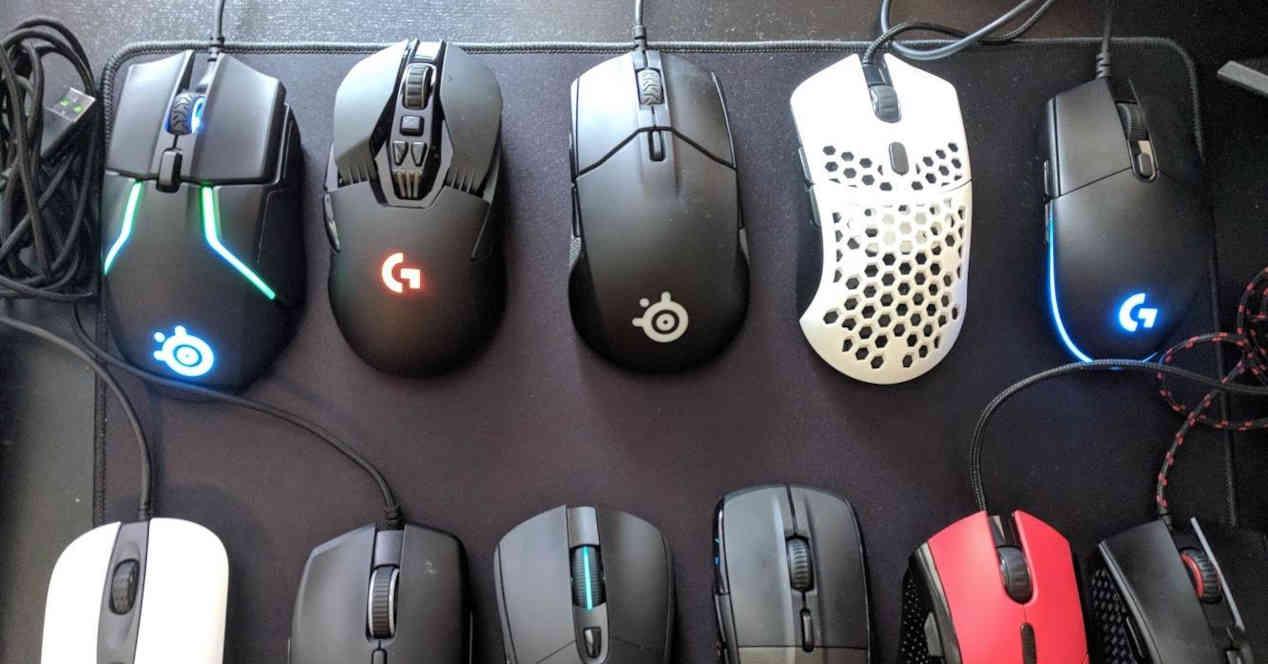We use the mouse on a daily basis on our PCs, it is an essential part and we cannot imagine making our computer work without it, but it is directly linked to the graphical interface and has evolved alongside it until reaching the Contemporary PC.
The first mouse in history
If you want to know who the idea was to create the mouse, it was created by one of the pioneers of modern computing, Douglas Engelbert, who introduced a series of concepts that are still used in computer programs today. ‘hui. It was an invention that used two wheels to provide two-axis motion, so it was different from the ball mice that appeared years later.
In fact, the first ball-based control mechanism was invented in 1952 by the Royal Canadian Navy, it was the classic 5-hole bowling ball mounted on a mechanism, which followed the movement in which the ball was rotated. and transferred said information to movements on the screen, the invention was never patented but the concept of using a ball to move the screen cursor was.
An example is this Telefunken template, which was used as the input mechanism for creating vector graphics in DEC PDP-1, it was in the 60s that the essential foundations of infographic generation and creation hardware were built.
The Xerox Alto and the first graphical user interface in history
In 1968, Douglas Engelbert made what is considered the mother of all demos, which influenced many computer scientists of the time, but especially the Xerox development labs, who created the Alto, a minicomputer. made up of hundreds of chips from TTL, but it was the first not only to capture Engelbert’s ideas but also the first GUI in history.
The potential of the Xerox Alto was completely ignored by Xerox executives, who never understood the potential it was going to have in the IT world, so much so that they let a certain Steve Jobs do it. tour of Xerox facilities. Park and could see the potential
Out of curiosity, Xerox released a low-cost version of the Xerox Alto in the form of the Xerox Star in 1980, which included the first mouse sold to the mass market.
The talented copy, geniuses fly
In 1981 Apple had a huge problem, its Apple III designed to take on IBM in the enterprise market was a fiasco, and IBM PC sales in that market were going very well. Apple wanted to leave the domestic market because that was not where the money was but by selling computers to companies, but for that they needed a coup.
Jobs had seen the graphical user interface in 1979, which at the time was codenamed Apple IV although in the end it was called Apple Lisa, which was the direct precursor of the Macintosh and the idea that Apple had was building a Xerox Alto, but ten years later and much cheaper
The Apple Lisa came out in 1983 as the first home computer with a GUI, but its $ 10,000 made it a huge business fiasco.
Microsoft friend
What a lot of people don’t know is that Bill Gates’ first big deal was not MS-DOS but the inclusion of his BASIC in a ROM built into Apple II + from, which would cement a excellent business relationship with Steve Jobs. When the founder of Apple was kicked out of Project Apple Lisa, he decided to take over Project Macintosh and turn it into Lisa at a low price.
Jobs gave Gates all the information and a contract, which said they couldn’t get anything for PC until the Apple Macintosh launch date, which would be 1982, Apple couldn’t meet the date and it gave him Microsoft’s carte blanche to launch the first PC application that would use the mouse, Microsoft Word, the mouse had arrived on the PC for the first time.
The mouse is standardized on the PC
In the 1980s, the PC mouse was used in some specific applications but not in the main interface of the operating system. which was still a text interface.
In 1992 Microsoft decided to st andardize the PC by selling its Windows 3.1 and the latest version of MS-DOS as an inseparable package, from that point on the mouse became part of all PCs and ceased to be being an optional device for some applications, a situation this has not changed since.
This was exploited by PC games where new genres were born such as first person shooters and real time strategy games, which were the first in history to use the mouse to control movement. during the game or to select and move troops.
Other ephemeris in the history of the mouse
The first wireless PC mouse was released by Logitech in 1991, and Cordless MouseMan was the first to use radio signals to communicate with the PC.
Logitech itself was also the first to launch the first laser mouse, the MX1000, it did so in 2004 and that was a big development for optical mice, as until then they had depended on how LEDs of the mouse would light up. surface, making them impossible to use on some surfaces.
Variants of the mouse have appeared throughout its history
A very well known variation of the mouse is the addition of a gyroscope and / or an accelerometer so that the mouse can follow movements in a full three-dimensional space, but for this it needs a point of origin. for orientation. The controller of the Nintendo Wii console was based on this principle, but the ability to move a cursor in three-dimensional space has never been used in a serious way, especially due to the mathematical complexity involved.
This concept is used in tracking systems for virtual reality, reality headsets with Outside-In tracking use the same technological principles as this type of mouse, but because it was not accompanied by a user interface adequate and the failure of motion control by consoles has remained in a niche technology.
Table of Contents



















